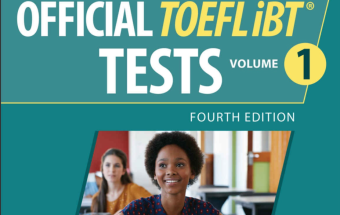OFFICIAL iBT Test (Volume 1) - Test 4
READING
This section measures your ability to understand academic passages in English.
There are three passages in the section. Give yourself 18 minutes to read each passage and answer the questions about it. The entire section will take 54 minutes to complete.
You may look back at a passage when answering the questions. You can skip questions and go back to them later as long as there is time remaining.
Directions: Read the passage. Then answer the questions. Give yourself 18 minutes to complete this practice set.
GALILEO AND HIS TELESCOPE
Early in the seventeenth century, the Italian scientist Galileo Galilei helped disprove the Earth-centered model of the solar system and other ideas popular since Aristotle (384 B.C.–322 B.C.) and the ancient Greeks. Galileo used his telescope to support the Sun-centered model proposed by Nicolaus Copernicus in the previous century. He did not invent optical lenses, nor was he the first to use them in a telescope. Rather, he promoted his astronomical ideas by exploiting the novelty and shock value of telescopic observations. Galileo’s report of his observations in his book Sidereus Nuncius (The Starry Messenger) was widely circulated and brought him fame.
By Galileo’s time, glass lenses had been in use for about 300 years. Their origins are not clear, but with them, eyeglass makers could correct defects of vision. In 1609 Galileo heard that a Dutchman had constructed a spyglass that made distant objects appear to be nearby. Although Galileo had little experience with optics, he immediately worked to duplicate the instrument and succeeded in constructing an optical device that made objects appear thirty times closer than when viewed with the naked eye. He put the device to astronomical use at once. Within a few weeks in 1609 and 1610, he made a series of astronomical discoveries that marked a new era in astronomy. Although Galileo was not the first person to build a telescope, he first recognized that the telescope increased our power to perceive reality.
When Galileo turned his telescope to the Moon, he saw that the Moon’s surface does not conform to Aristotle’s ideal for a perfect heavenly body. Rather than being smooth and spherical, it is rough, with chains of mountains and valleys and many craters. Galileo then determined the height of a lunar mountain from the length of its shadow: roughly six kilometers (nearly 20,000 feet) was the astonishing (and correct) result. Galileo next peered at the stars. His instrument fragmented the faint band of the Milky Way into innumerable stars, more than can be distinguished with the unaided eye. This observation refuted the Aristotelian idea that the sky contains a set number of stars that cannot change.
Then Galileo hit on what he considered to be his most important discovery —four new “planets.” Actually they were not new planets but rather were the four brightest moons of Jupiter. (At least seventeen moons are now known.) To his amazement, Galileo found that these four bodies revolved around Jupiter. From continuous nightly observations, he estimated the orbital periods of Jupiter’s satellites. Here he found another argument against tradition, for Jupiter and its satellites resembled a miniature solar system. This fact required a second center of revolution in the cosmos and contradicted the Aristotelian doctrine that only the center of the universe— Earth—could be the center of revolution. Historically, Galileo may not have been the first to report on moons orbiting Jupiter. An old Chinese record notes that Kan Te, an astronomer in China in the fourth century B.C., made many observations of Jupiter. In one of his books, Kan Te states that Jupiter looked as if it had “a small reddish star attached to it.” This may record the brightest of Jupiter’s moons, which can, under ideal circumstances, be visible to the unaided eye. If so, Kan Te recorded this moon some 2,000 years before Galileo observed it with a telescope.
Galileo’s Sidereus Nuncius was published on March 12, 1610, in Latin. Because it attracted immediate attention from scholars in many countries, it was quickly reprinted and read by intellectuals all over Europe. These telescopic discoveries, especially the news of Jupiter’s moons, not only brought fame to Galileo but also created a demand for the telescopes he produced in his workshop. He was still cautious in print: although he used his observations to demolish Aristotle’s idea of the cosmos, he did not openly advocate the Copernican scheme or support it with his observations. Critics quickly spurned Galileo’s work by invoking atmospheric phenomena or flaws in the lenses. Such arguments seem strange to us today, but they appeared reasonable enough to seventeenth-century people. The art of lens-making was just beginning, and many lenses produced ghost images. (Galileo’s telescopes produced images far inferior to those in a cheap modern telescope.)
Directions: Now answer the questions.
PARAGRAPH 1
Early in the seventeenth century, the Italian scientist Galileo Galilei helped disprove the Earth-centered model of the solar system and other ideas popular since Aristotle (384 B.C.–322 B.C.) and the ancient Greeks. Galileo used his telescope to support the Sun-centered model proposed by Nicolaus Copernicus in the previous century. He did not invent optical lenses, nor was he the first to use them in a telescope. Rather, he promoted his astronomical ideas by exploiting the novelty and shock value of telescopic observations. Galileo’s report of his observations in his book Sidereus Nuncius (The Starry Messenger) was widely circulated and brought him fame.
1. The word “exploiting” in paragraph 1 is closest in meaning to
A. calling attention to
B. describing
C. revealing
D. taking advantage of
PARAGRAPH 2
By Galileo’s time, glass lenses had been in use for about 300 years. Their origins are not clear, but with them, eyeglass makers could correct defects of vision. In 1609 Galileo heard that a Dutchman had constructed a spyglass that made distant objects appear to be nearby. Although Galileo had little experience with optics, he immediately worked to duplicate the instrument and succeeded in constructing an optical device that made objects appear thirty times closer than when viewed with the naked eye. He put the device to astronomical use at once. Within a few weeks in 1609 and 1610, he made a series of astronomical discoveries that marked a new era in astronomy. Although Galileo was not the first person to build a telescope, he first recognized that the telescope increased our power to perceive reality.
2. According to paragraph 2, which of the following is true of Galileo’s optical device?
A. It was discovered in an attempt to correct defects in vision.
B. It is now recognized as the earliest telescope.
C. It was less powerful than other telescopes invented around the same time.
D. It was modeled after an instrument created by somebody else.
PARAGRAPH 3
When Galileo turned his telescope to the Moon, he saw that the Moon’s surface does not conform to Aristotle’s ideal for a perfect heavenly body. Rather than being smooth and spherical, it is rough, with chains of mountains and valleys and many craters. Galileo then determined the height of a lunar mountain from the length of its shadow: roughly six kilometers (nearly 20,000 feet) was the astonishing (and correct) result. Galileo next peered at the stars. His instrument fragmented the faint band of the Milky Way into innumerable stars, more than can be distinguished with the unaided eye. This observation refuted the Aristotelian idea that the sky contains a set number of stars that cannot change.
3. The phrase “conform to” in paragraph 3 is closest in meaning to
A. match
B. clarify
C. challenge
D. exceed
4. Which of the following is NOT mentioned in paragraph 3 as an Aristotelian idea that was overturned by Galileo’s observations?
A. Heavenly bodies are round in shape.
B. The surfaces of heavenly bodies are smooth.
C. Lunar mountains are short in height.
D. The number of stars in the sky remains constant.
PARAGRAPH 4
Then Galileo hit on what he considered to be his most important discovery—four new “planets.” Actually they were not new planets but rather were the four brightest moons of Jupiter. (At least seventeen moons are now known.) To his amazement, Galileo found that these four bodies revolved around Jupiter. From continuous nightly observations, he estimated the orbital periods of Jupiter’s satellites. Here he found another argument against tradition, for Jupiter and its satellites resembled a miniature solar system. This fact required a second center of revolution in the cosmos and contradicted the Aristotelian doctrine that only the center of the universe— Earth—could be the center of revolution. Historically, Galileo may not have been the first to report on moons orbiting Jupiter. An old Chinese record notes that Kan Te, an astronomer in China in the fourth century B.C., made many observations of Jupiter. In one of his books, Kan Te states that Jupiter looked as if it had “a small reddish star attached to it.” This may record the brightest of Jupiter’s moons, which can, under ideal circumstances, be visible to the unaided eye. If so, Kan Te recorded this moon some 2,000 years before Galileo observed it with a telescope.
5. According to paragraph 4, what did Galileo discover by calculating the orbital periods of Jupiter’s satellites?
A. That Jupiter’s satellites were not all moons
B. That the universe has more than one center of revolution
C. That the orbital periods of Jupiter’s satellites are unusually long
D. That Aristotle had correctly identified the center of the solar system
6. According to paragraph 4, the Chinese astronomer Kan Te may have been one of the first to
A. estimate the distance between Jupiter and its nearest moon
B. observe Jupiter through an early telescope
C. record the existence of one of Jupiter’s moons
D. understand the need for an instrument that allowed the human eye to observe the solar system
PARAGRAPH 5
Galileo’s Sidereus Nuncius was published on March 12, 1610, in Latin. Because it attracted immediate attention from scholars in many countries, it was quickly reprinted and read by intellectuals all over Europe. These telescopic discoveries, especially the news of Jupiter’s moons, not only brought fame to Galileo but also created a demand for the telescopes he produced in his workshop. He was still cautious in print: although he used his observations to demolish Aristotle’s idea of the cosmos, he did not openly advocate the Copernican scheme or support it with his observations. Critics quickly spurned Galileo’s work by invoking atmospheric phenomena or flaws in the lenses. Such arguments seem strange to us today, but they appeared reasonable enough to seventeenth-century people. The art of lens-making was just beginning, and many lenses produced ghost images. (Galileo’s telescopes produced images far inferior to those in a cheap modern telescope.)
7. Why does the author mention that, in Galileo’s time, "The art of lens-making was just beginning, and many lenses produced ghost images"?
A. To indicate why Galileo’s observations have little value for today’s scientists
B. To identify the origins of the cheap modern telescope
C. To explain why criticisms of Galileo’s discoveries seemed reasonable at the time
D. To argue that Galileo’s telescopes were superior to other lenses available at the time
8. According to paragraph 5, all of the following were true of Galileo’s book Sidereus Nuncius EXCEPT:
A. It was read by people in many countries.
B. It stated that the Copernican model was correct.
C. It increased interest in the telescopes that Galileo made.
D. Its discussion of Jupiter’s moons helped to make Galileo famous.
PARAGRAPH 5
Galileo’s Sidereus Nuncius was published on March 12, 1610, in Latin. Because it attracted immediate attention from scholars in many countries, it was quickly reprinted and read by intellectuals all over Europe. These telescopic discoveries, especially the news of Jupiter’s moons, not only brought fame to Galileo but also created a demand for the telescopes he produced in his workshop. (A) He was still cautious in print: although he used his observations to demolish Aristotle’s idea of the cosmos, he did not openly advocate the Copernican scheme or support it with his observations. (B) Critics quickly spurned Galileo’s work by invoking atmospheric phenomena or flaws in the lenses. (C) Such arguments seem strange to us today, but they appeared reasonable enough to seventeenth-century people. (D) (Galileo’s telescopes produced images far inferior to those in a cheap modern telescope.)
9. Look at the part of the passage that is displayed above. The letters (A), (B), (C), and (D) indicate where the following sentence could be added.
Nevertheless, the book came under attack.
Where would the sentence best fit?
A. Choice A
B. Choice B
C. Choice C
D. Choice D
10. Directions: An introductory sentence for a brief summary of the passage is provided below. Complete the summary by selecting the 3 answer choices that express the most important ideas in the passage. Some sentences do not belong in the summary because they express ideas that are not presented in the passage or are minor ideas in the passage.
Write your answers in the spaces where they belong. You can either write the letter of your answer choice or you can copy the sentence.

Answer Choices
A. Galileo was able to apply his extensive knowledge of optics in order to construct a more powerful telescope.
B. Although he did not invent the telescope, Galileo was one of the first to recognize its full potential in enabling humans to see distant objects in new and startling ways.
C. Galileo’s observations of the Moon and Jupiter challenged traditional Aristotelian notions of the nature of heavenly bodies and the paths of their orbits.
D. Discoveries made by Galileo provided support for a model of the solar system that had been developed long before by Kan Te, an ancient Chinese astronomer.
E. In his Sidereus Nuncius, Galileo argued convincingly that his observations of Jupiter’s satellites proved that the Copernican scheme was correct.
F. Galileo’s Sidereus Nuncius was greeted with skepticism by critics, who attributed his “discoveries” to flaws in his telescope or to disturbances in the atmosphere.
Directions: Read the passage. Then answer the questions. Give yourself 18 minutes to complete this practice set.
EUROPE IN THE TWELFTH CENTURY
Europe in the eleventh century underwent enormous social, technological, and economic changes, but this did not create a new Europe—it created two new ones. The north was developed as a rigidly hierarchical society in which status was determined, or was at least indicated, by the extent to which one owned, controlled, or labored on land; whereas the Mediterranean south developed a more fluid, and therefore more chaotic, world in which industry and commerce predominated and social status both reflected and resulted from the role that one played in the public life of the community. In other words, individual identity and social community in the north were established on a personal basis, whereas in the south they were established on a civic basis. By the start of the twelfth century, northern and southern Europe were very different places indeed, and the Europeans themselves noticed it and commented on it.
Political dominance belonged to the north. Germany, France, and England had large populations and large armies that made them, in the political and military senses, the masters of western Europe. Organized by the practices known collectively as feudalism1, these kingdoms emerged as powerful states with sophisticated machineries of government. Their kings and queens were the leading figures of the age; their castles and cathedrals stood majestically on the landscape as symbols of their might; their armies both energized and defined the age. Moreover, feudal society showed a remarkable ability to adapt to new needs by encouraging the parallel development of domestic urban life and commercial networks; in some regions of the north, in fact, feudal society may even have developed in response to the start of the trends toward bigger cities. But southern Europe took the lead in economic and cultural life. Though the leading Mediterranean states were small in size, they were considerably wealthier than their northern counterparts. The Italian city of Palermo in the twelfth century, for example, alone generated four times the commercial tax revenue of the entire kingdom of England. Southern communities also possessed urbane, multilingual cultures that made them the intellectual and artistic leaders of the age. Levels of general literacy in the south far surpassed those of the north, and the people of the south put that learning to use on a large scale. Science, mathematics, poetry, law, historical writing, religious speculation, translation, and classical studies all began to flourish; throughout most of the twelfth century, most of the continent’s best brains flocked to southern Europe.
So too did a lot of the north’s soldiers. One of the central themes of the political history of the twelfth century was the continual effort by the northern kingdoms to extend their control southward in the hope of tapping into the Mediterranean bonanza. The German emperors starting with Otto I (936–973), for example, struggled ceaselessly to establish their control over the cities of northern Italy, since those cities generated more revenue than all of rural Germany combined. The kings of France used every means at their disposal to push the lower border of their kingdom to the Mediterranean shoreline. And the Normans who conquered and ruled England established outposts of Norman power in Sicily and the adjacent lands of southern Italy; the English kings also hoped or claimed at various times to be, either through money or marriage diplomacy, the rulers of several Mediterranean states. But as the northern world pressed southward, so too did some of the cultural norms and social mechanisms of the south expand northward. Over the course of the twelfth century, the feudal kingdoms witnessed a proliferation of cities modeled in large degree on those of the south. Contact with the merchants and financiers of the Mediterranean led to the development of northern industry and international trade (which helped to pay for many of the castles and cathedrals mentioned earlier). And education spread as well, culminating in the foundation of what is arguably medieval Europe’s greatest invention: the university. The relationship of north and south was symbiotic, in other words, and the contrast between them was more one of differences in degree than of polar opposition.
1. feudalism: a political and economic system based on the relationship of a lord to people of lower status, who owed service and/or goods to the lord in exchange for the use of land.
Directions: Now answer the questions.
PARAGRAPH 1
Europe in the eleventh century underwent enormous social, technological, and economic changes, but this did not create a new Europe—it created two new ones. The north was developed as a rigidly hierarchical society in which status was determined, or was at least indicated, by the extent to which one owned, controlled, or labored on land; whereas the Mediterranean south developed a more fluid, and therefore more chaotic, world in which industry and commerce predominated and social status both reflected and resulted from the role that one played in the public life of the community. In other words, individual identity and social community in the north were established on a personal basis, whereas in the south they were established on a civic basis. By the start of the twelfth century, northern and southern Europe were very different places indeed, and the Europeans themselves noticed it and commented on it.
11. According to paragraph 1, which of the following was a deciding factor in a person’s place in society in northern Europe at the end of the eleventh century?
A. Ownership of a commercial enterprise
B. Participation in social and technological changes
C. Role in public life in the community
D. Relationship to land through ownership or labor
12. According to paragraph 1, which of the following best characterizes the societies in European lands close to the Mediterranean Sea at the beginning of the twelfth century?
A. They were civic societies dominated by industry and commerce.
B. They were based on individual social status.
C. They had a fixed and hierarchical form of government.
D. They were established on the idea of individual responsibility.
PARAGRAPH 2
Political dominance belonged to the north. Germany, France, and England had large populations and large armies that made them, in the political and military senses, the masters of western Europe. Organized by the practices known collectively as feudalism1, these kingdoms emerged as powerful states with sophisticated machineries of government. Their kings and queens were the leading figures of the age; their castles and cathedrals stood majestically on the landscape as symbols of their might; their armies both energized and defined the age. Moreover, feudal society showed a remarkable ability to adapt to new needs by encouraging the parallel development of domestic urban life and commercial networks; in some regions of the north, in fact, feudal society may even have developed in response to the start of the trends toward bigger cities. But southern Europe took the lead in economic and cultural life. Though the leading Mediterranean states were small in size, they were considerably wealthier than their northern counterparts. The Italian city of Palermo in the twelfth century, for example, alone generated four times the commercial tax revenue of the entire kingdom of England. Southern communities also possessed urbane, multilingual cultures that made them the intellectual and artistic leaders of the age. Levels of general literacy in the south far surpassed those of the north, and the people of the south put that learning to use on a large scale. Science, mathematics, poetry, law, historical writing, religious speculation, translation, and classical studies all began to flourish; throughout most of the twelfth century, most of the continent’s best brains flocked to southern Europe.
1. feudalism: a political and economic system based on the relationship of a lord to people of lower status, who owed service and/or goods to the lord in exchange for the use of land.
13. The word “counterparts” in the passage is closest in meaning to
A. associates
B. equivalents
C. opponents
D. admirers
14. Why does the author mention the “Italian city of Palermo” in the passage?
A. It had a population that spoke several different languages.
B. Its artists and intellectuals were famous both in the north and south.
C. Its commerce made it richer than a large northern country.
D. It was a relatively small and unimportant Mediterranean state.
15. According to paragraph 2, European intellectuals moved to southern Europe during the twelfth century because southern cities
A. needed learned people for commerce
B. paid educated people better than northern cities did
C. were flourishing centers of science, literature, and other studies
D. needed teachers to improve the levels of general learning
PARAGRAPH 3
So too did a lot of the north’s soldiers. One of the central themes of the political history of the twelfth century was the continual effort by the northern kingdoms to extend their control southward in the hope of tapping into the Mediterranean bonanza. The German emperors starting with Otto I (936–973), for example, struggled ceaselessly to establish their control over the cities of northern Italy, since those cities generated more revenue than all of rural Germany combined. The kings of France used every means at their disposal to push the lower border of their kingdom to the Mediterranean shoreline. And the Normans who conquered and ruled England established outposts of Norman power in Sicily and the adjacent lands of southern Italy; the English kings also hoped or claimed at various times to be, either through money or marriage diplomacy, the rulers of several Mediterranean states. But as the northern world pressed southward, so too did some of the cultural norms and social mechanisms of the south expand northward. Over the course of the twelfth century, the feudal kingdoms witnessed a proliferation of cities modeled in large degree on those of the south. Contact with the merchants and financiers of the Mediterranean led to the development of northern industry and international trade (which helped to pay for many of the castles and cathedrals mentioned earlier). And education spread as well, culminating in the foundation of what is arguably medieval Europe’s greatest invention: the university. The relationship of north and south was symbiotic, in other words, and the contrast between them was more one of differences in degree than of polar opposition.
16. Which of the sentences below best expresses the essential information in the highlighted sentence in paragraph 3? Incorrect choices change the meaning in important ways or leave out essential information.
A. In political history, northern kingdoms tried to extend their control during the twelfth century, but the south tapped into the rich treasures it had around the Mediterranean.
B. Political history demonstrates that during the twelfth century, while southern states enjoyed the Mediterranean bonanza, northern countries increased the power of their kings.
C. The political history of twelfth-century Europe shows particularly that northern countries continually tried to expand their rule into the south to profit from the riches there.
D. Political history shows that northern kingdoms were so influenced by the example of Mediterranean wealth that they advanced into other areas.
17. The word “proliferation” in the passage is closest in meaning to
A. beginning
B. increase
C. occupation
D. construction
18. According to paragraph 3, northern Europe was influenced by the Mediterranean states in all of the following ways EXCEPT
A. the design of castles and cathedrals
B. the spread of education
C. the construction of cities
D. the development of industry and trade
PARAGRAPH 1
Europe in the eleventh century underwent enormous social, technological, and economic changes, but this did not create a new Europe—it created two new ones. (A) The north was developed as a rigidly hierarchical society in which status was determined, or was at least indicated, by the extent to which one owned, controlled, or labored on land; whereas the Mediterranean south developed a more fluid, and therefore more chaotic, world in which industry and commerce predominated and social status both reflected and resulted from the role that one played in the public life of the community. (B) In other words, individual identity and social community in the north were established on a personal basis, whereas in the south they were established on a civic basis. (C) By the start of the twelfth century, northern and southern Europe were very different places indeed, and the Europeans themselves noticed it and commented on it. (D)
19. Look at the part of the passage that is displayed above. The letters (A), (B), (C), and (D) indicate where the following sentence could be added.
There was northern Europe on the one hand and southern Europe on the other.
Where would the sentence best fit?
A. Choice A
B. Choice B
C. Choice C
D. Choice D
20. Directions: Select from the seven phrases below the two phrases that correctly characterize northern Europe during the twelfth century and the three phrases that correctly characterize southern Europe. Two of the phrases will NOT be used.
Write your answer choices in the spaces where they belong. You can either write the letter of your answer choice or you can copy the sentence.
.png)
Answer Choices
A. Democratic social structure
B. Sophisticated culture
C. Famous kings and queens
D. Highly literate population
E. Large military forces
Directions: Read the passage. Then answer the questions. Give yourself 18 minutes to complete this practice set.
WHAT IS A COMMUNITY?
The Black Hills forest, the prairie riparian forest, and other forests of the western United States can be separated by the distinctly different combinations of species they comprise. It is easy to distinguish between prairie riparian forest and Black Hills forest—one is a broad-leaved forest of ash and cottonwood trees, the other is a coniferous forest of ponderosa pine and white spruce trees. One has kingbirds; the other, juncos (birds with white outer tail feathers). The fact that ecological communities are, indeed, recognizable clusters of species led some early ecologists, particularly those living in the beginning of the twentieth century, to claim that communities are highly integrated, precisely balanced assemblages. This claim harkens back to even earlier arguments about the existence of a balance of nature, where every species is there for a specific purpose, like a vital part in a complex machine. Such a belief would suggest that to remove any species, whether it be plant, bird, or insect, would somehow disrupt the balance, and the habitat would begin to deteriorate. Likewise, to add a species may be equally disruptive.
One of these pioneer ecologists was Frederick Clements, who studied ecology extensively throughout the Midwest and other areas in North America. He held that within any given region of climate, ecological communities tended to slowly converge toward a single endpoint, which he called the “climatic climax.” This “climax” community was, in Clements’s mind, the most well-balanced, integrated grouping of species that could occur within that particular region. Clements even thought that the process of ecological succession—the replacement of some species by others over time —was somewhat akin to the development of an organism, from embryo to adult. Clements thought that succession represented discrete stages in the development of the community (rather like infancy, childhood, and adolescence), terminating in the climatic “adult” stage, when the community became self-reproducing and succession ceased. Clements’s view of the ecological community reflected the notion of a precise balance of nature.
Clements was challenged by another pioneer ecologist, Henry Gleason, who took the opposite view. Gleason viewed the community as largely a group of species with similar tolerances to the stresses imposed by climate and other factors typical of the region. Gleason saw the element of chance as important in influencing where species occurred. His concept of the community suggests that nature is not highly integrated. Gleason thought succession could take numerous directions, depending upon local circumstances.
Who was right? Many ecologists have made precise measurements, designed to test the assumptions of both the Clements and Gleason models. For instance, along mountain slopes, does one life zone, or habitat type, grade sharply or gradually into another? If the divisions are sharp, perhaps the reason is that the community is so well integrated, so holistic, so like Clements viewed it, that whole clusters of species must remain together. If the divisions are gradual, perhaps, as Gleason suggested, each species is responding individually to its environment, and clusters of species are not so integrated that they must always occur together.
It now appears that Gleason was far closer to the truth than Clements. The ecological community is largely an accidental assemblage of species with similar responses to a particular climate. Green ash trees are found in association with plains cottonwood trees because both can survive well on floodplains and the competition between them is not so strong that only one can persevere. One ecological community often flows into another so gradually that it is next to impossible to say where one leaves off and the other begins. Communities are individualistic.
This is not to say that precise harmonies are not present within communities. Most flowering plants could not exist were it not for their pollinators—and vice versa. Predators, disease organisms, and competitors all influence the abundance and distribution of everything from oak trees to field mice. But if we see a precise balance of nature, it is largely an artifact of our perception, due to the illusion that nature, especially a complex system like a forest, seems so unchanging from one day to the next.
Directions: Now answer the questions.
PARAGRAPH 1
The Black Hills forest, the prairie riparian forest, and other forests of the western United States can be separated by the distinctly different combinations of species they comprise. It is easy to distinguish between prairie riparian forest and Black Hills forest—one is a broad-leaved forest of ash and cottonwood trees, the other is a coniferous forest of ponderosa pine and white spruce trees. One has kingbirds; the other, juncos (birds with white outer tail feathers). The fact that ecological communities are, indeed, recognizable clusters of species led some early ecologists, particularly those living in the beginning of the twentieth century, to claim that communities are highly integrated, precisely balanced assemblages. This claim harkens back to even earlier arguments about the existence of a balance of nature, where every species is there for a specific purpose, like a vital part in a complex machine. Such a belief would suggest that to remove any species, whether it be plant, bird, or insect, would somehow disrupt the balance, and the habitat would begin to deteriorate. Likewise, to add a species may be equally disruptive.
21. In paragraph 1, why does the author distinguish between prairie riparian forest and Black Hills forest?
A. To highlight the difference between the views of various ecologists about the nature of ecological communities
B. To illustrate why some ecologists tended to view ecological communities as highly integrated
C. To demonstrate that one forest has a greater variety of species than the other
D. To show how these two forests differ from others in the United States
22. According to paragraph 1, what was a common claim about ecological communities before the early twentieth century?
A. Every species in a community has a specific role in that community.
B. It is important to protect communities by removing certain species.
C. A precise balance is difficult to maintain in an ecological community.
D. It is necessary for new species to be added quickly as ecological communities develop.
23. According to paragraph 1, the belief in a balance of nature suggests that removing a species from an ecological community would have which of the following effects?
A. It would reduce competition between the remaining species of the community.
B. It would produce a different, but equally balanced, community.
C. It would lead to a decline in the community.
D. It would cause more harm than adding a species to the community.
PARAGRAPH 2
One of these pioneer ecologists was Frederick Clements, who studied ecology extensively throughout the Midwest and other areas in North America. He held that within any given region of climate, ecological communities tended to slowly converge toward a single endpoint, which he called the “climatic climax.” This “climax” community was, in Clements’s mind, the most well-balanced, integrated grouping of species that could occur within that particular region. Clements even thought that the process of ecological succession—the replacement of some species by others over time —was somewhat akin to the development of an organism, from embryo to adult. Clements thought that succession represented discrete stages in the development of the community (rather like infancy, childhood, and adolescence), terminating in the climatic “adult” stage, when the community became self-reproducing and succession ceased. Clements’s view of the ecological community reflected the notion of a precise balance of nature.
24. Which of the following best represents the view of ecological communities associated with Frederick Clements in paragraph 2?
A. Only when all species in a community are at the reproductive stage of development is an ecological community precisely balanced.
B. When an ecological community achieves “climatic climax,” it begins to decline.
C. All climates have similar climax communities.
D. Ecological communities eventually reach the maximum level of balance that is possible for their region.
PARAGRAPH 3
Clements was challenged by another pioneer ecologist, Henry Gleason, who took the opposite view. Gleason viewed the community as largely a group of species with similar tolerances to the stresses imposed by climate and other factors typical of the region. Gleason saw the element of chance as important in influencing where species occurred. His concept of the community suggests that nature is not highly integrated. Gleason thought succession could take numerous directions, depending upon local circumstances.
25. According to Gleason in paragraph 3, the occurrence of a species in a particular community is influenced by
A. unpredictable events
B. how individualistic the species is
C. the number of other species present
D. the tolerance of other species to stresses
PARAGRAPH 4
Who was right? Many ecologists have made precise measurements, designed to test the assumptions of both the Clements and Gleason models. For instance, along mountain slopes, does one life zone, or habitat type, grade sharply or gradually into another? If the divisions are sharp, perhaps the reason is that the community is so well integrated, so holistic, so like Clements viewed it, that whole clusters of species must remain together. If the divisions are gradual, perhaps, as Gleason suggested, each species is responding individually to its environment, and clusters of species are not so integrated that they must always occur together.
26. What did the ecologists in paragraph 4 hope to determine with their measurements?
A. Whether different species compete for the same environments
B. Whether habitats are sharply separated or gradually flow into each other
C. Whether succession differs in different types of habitats
D. Whether integrated communities survive better than independent communities
PARAGRAPH 5
It now appears that Gleason was far closer to the truth than Clements. The ecological community is largely an accidental assemblage of species with similar responses to a particular climate. Green ash trees are found in association with plains cottonwood trees because both can survive well on floodplains and the competition between them is not so strong that only one can persevere. One ecological community often flows into another so gradually that it is next to impossible to say where one leaves off and the other begins. Communities are individualistic.
27. The word “persevere” in the passage is closest in meaning to
A. reproduce
B. fail
C. expand
D. continue
PARAGRAPH 6
This is not to say that precise harmonies are not present within communities. Most flowering plants could not exist were it not for their pollinators—and vice versa. Predators, disease organisms, and competitors all influence the abundance and distribution of everything from oak trees to field mice. But if we see a precise balance of nature, it is largely an artifact of our perception, due to the illusion that nature, especially a complex system like a forest, seems so unchanging from one day to the next.
28. Which of the sentences below best expresses the essential information in the highlighted sentence in paragraph 6? Incorrect choices change the meaning in important ways or leave out essential information.
A. We see nature as precisely balanced because nature is unchanging.
B. A precise balance of nature is not possible because of the complexity of natural systems.
C. Our sense that nature is precisely balanced results from the illusion that it is unchanging.
D. Because nature is precisely balanced, complex systems do not seem to change.
PARAGRAPH 4
(A) Who was right? (B) Many ecologists have made precise measurements, designed to test the assumptions of both the Clements and Gleason models. (C) For instance, along mountain slopes, does one life zone, or habitat type, grade sharply or gradually into another? (D) If the divisions are sharp, perhaps the reason is that the community is so well integrated, so holistic, so like Clements viewed it, that whole clusters of species must remain together. If the divisions are gradual, perhaps, as Gleason suggested, each species is responding individually to its environment, and clusters of species are not so integrated that they must always occur together.
29. Look at the part of the passage that is displayed above. The letters. (A), (B), (C), and. (D) indicate where the following sentence could be added.
Their research has helped to decide between the two views because it has focused on questions to which Clements and Gleason would give opposing answers.
Where would the sentence best fit?
A. Choice A
B. Choice B
C. Choice C
D. Choice D
30. Directions: An introductory sentence for a brief summary of the passage is provided below. Complete the summary by selecting the THREE answer choices that express the most important ideas in the passage. Some sentences do not belong in the summary because they express ideas that are not presented in the passage or are minor ideas in the passage.
Write your answer choices in the spaces where they belong. You can either write the letter of your answer choice or you can copy the sentence.

Answer Choices
A. Clements held that ecological communities were like organisms that compete with each other for dominance in a particular climatic region.
B. Clements saw the community as a collection of thoroughly interdependent species progressing toward a single climax community.
C. Gleason held that within a single climatic region, differing local factors would cause ecological communities to develop in different ways.
D. Gleason believed that sharp divisions would exist between species in different habitats.
E. Today’s ecologists recognize that ecological communities must be precisely and permanently balanced.
F. The current thinking is that communities are individualistic and largely accidental collections of species with similar needs and tolerances.
LISTENING
This section measures your ability to understand conversations and lectures in English.
Listen to each conversation and lecture only one time. After each conversation and lecture, you will answer some questions about it. Answer each question based on what is stated or implied by the speakers.
You may take notes while you listen and use your notes to help you answer the questions. Your notes will not be scored.
In some questions you will see this icon: This means that you will hear, but not see, the question.
Answer each question before moving on. Do not return to previous questions.
It will take about 41 minutes to listen to the conversations and lectures and answer the questions about them.
Directions: Listen to Track 52.
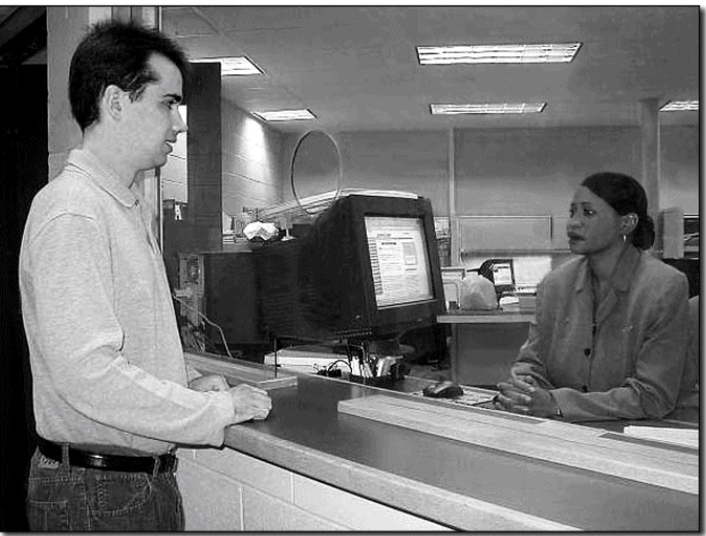
Directions: Now answer the questions.
1. Why does the man go to the computer center?
A. To learn how to use the Internet
B. To ask the woman where he can buy a computer
C. To ask if he can get instruction on using computers
D. To find out where the computer labs are located
2. How did the man probably feel when he first arrived at the computer center?
A. Embarrassed about his lack of computer skills
B. Excited to learn about computers
C. Upset that he needs to take an expensive computer course
D. Nervous about an assignment to write a paper on a computer
3. What does the woman imply about the books he bought for her father?
A. It does not include instruction on word processing.
B. It is not available at the campus bookstore.
C. It is intended only for people with a lot of computer experience.
D. It might be helpful for the man.
4. What does the woman imply about the student assistants?
A. The man will not be able to work with them for long.
B. They may not be good instructors for beginners.
C. They are required to teach students to use the computers.
D. Not all of them know about computers.
5. What will the woman do to help the man?
A. Lend him a book on computers
B. Give him a list of computer courses
C. Give him a list of student assistants
D. Recommend a computer instructor
Directions: Listen to Track 53.
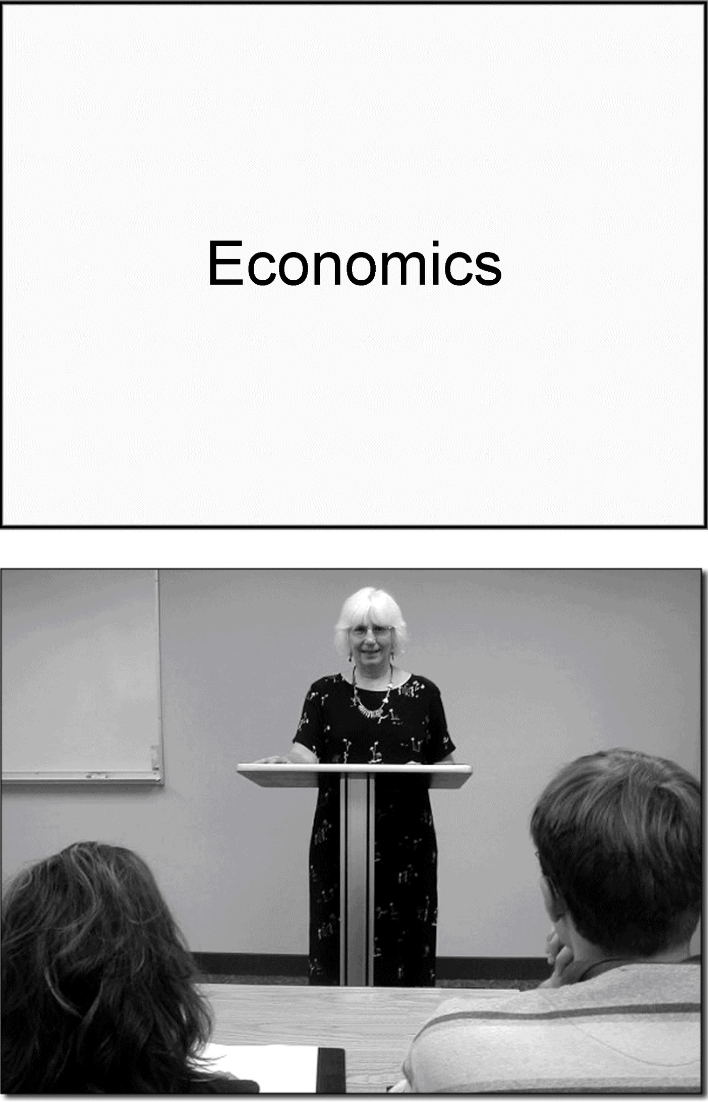
Directions: Now answer the questions.
6. What is the lecture mainly about?
A. Ways to limit the expansion of international trade
B. How restrictions on international trade can cause economic harm
C. Factors that influence the distribution of exports
D. Why international trade has expanded in recent years
7. According to the professor, why do many people want imports to be regulated?
A. To allow for price increases in domestic products
B. To make the prices of exports more competitive
C. To protect against domestic unemployment
D. To encourage the economic growth of certain industries
8. According to the professor, what is a negative result of limiting imports?
A. The pace of technological innovation slows down.
B. The number of domestic low-paying jobs decreases.
C. People move to areas where income is lower.
D. The potential income from exports is reduced.
9. What does the professor imply about the sugar industry in Florida?
A. It is a good source of high-paying jobs.
B. It should not be protected from competition from imports.
C. It is a good example of the effect of international specialization.
D. It is managed cost effectively.
10. What does the professor imply about the effect of increasing imports?
A. It will eventually result in a decrease in exports.
B. It is not necessarily bad for the economy.
C. It creates domestic economic problems that are easily solved.
D. Its impact on the economy is immediately apparent.
11. What is the professor’s opinion of retraining and relocating unemployed people?
A. It is more expensive over time than blocking imports.
B. It can sometimes have unintended consequences.
C. It is one possible way to adapt to an increase in imports.
D. It maintains the production levels of inefficient industries.
Directions: Listen to Track 54.
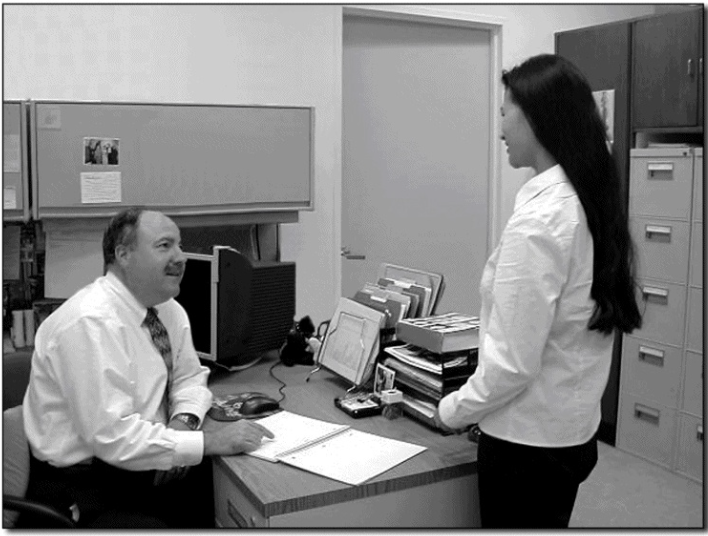
Directions: Now answer the questions.
12. Why does the student go to see her advisor, Professor Anderson?
A. She wants Professor Anderson’s help with her research.
B. She is responding to Professor Anderson’s invitation.
C. She has a complaint about another professor.
D. She wants to get a letter of recommendation to law school.
13. Why does the student mention Professor Connelly’s class?
A. She was not happy with the grade she received in the class.
B. She might be able to expand the research she did in the class.
C. It was the most difficult class she ever took.
D. Professor Connelly took the class on a trip to Venezuela.
14. What does the student tell Professor Anderson she will do before their next meeting?
A. Register for Professor Connelly’s class
B. Begin to write her honors thesis
C. Turn in her honors project to Professor Connelly
D. Talk to Professor Connelly about doing an honors project
15. Listen to Track 55.
A. Very few students are asked to consider writing an honors thesis.
B. The woman has shown poor research skills in the past.
C. An honors thesis could help the woman get into law school.
D. The woman should write a proposal outlining her research skills.
16. Listen to Track 56.
A. She is uncertain about her ability to write an honors thesis.
B. She does not think an honors thesis would be useful to her.
C. She considers herself to be a good writer.
D. She has only written one research paper before.
Directions: Listen to Track 57.
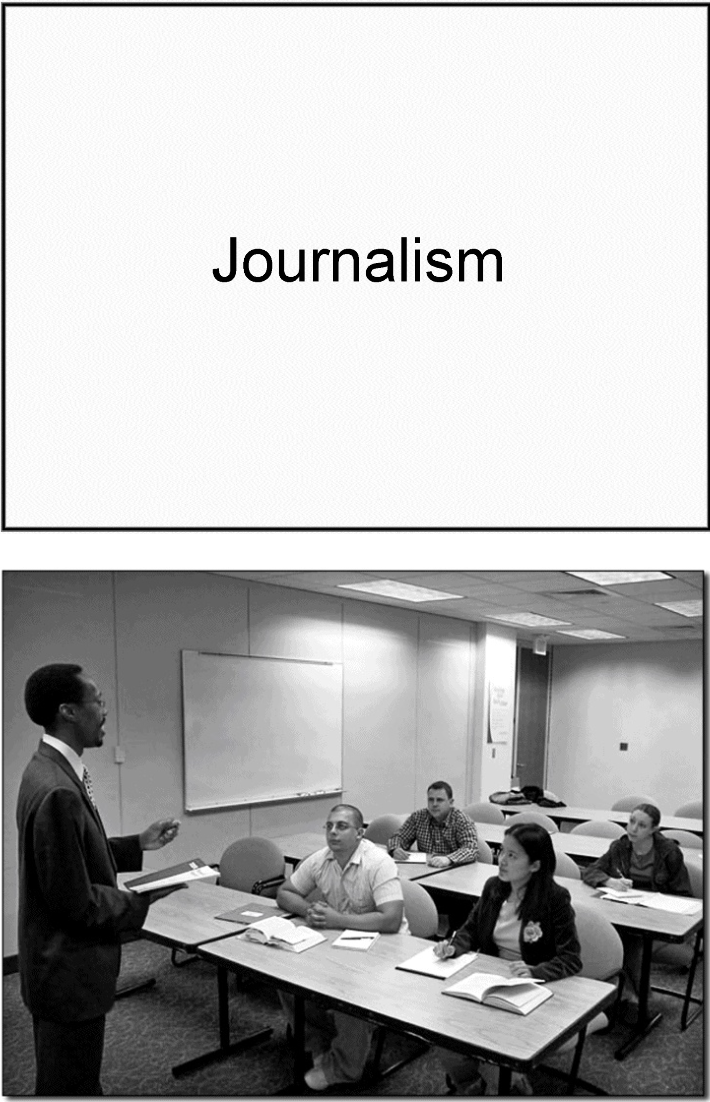
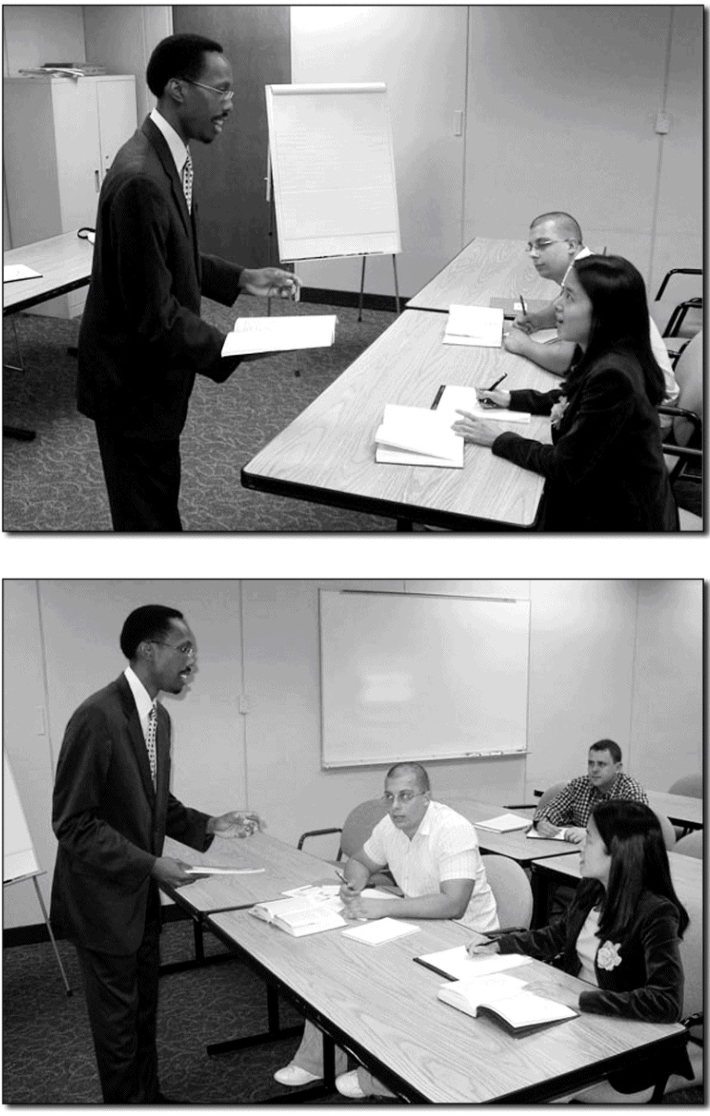
Directions: Now answer the questions.
17. What is the lecture mainly about?
A. Why some newspapers do not improve their services
B. What newspapers can do to increase their readership
C. Why local newspapers cannot compete with major newspapers
D. How the topics that interest readers have changed over the years
18. According to the professor, what topics are newspaper readers most interested in? Choose 2 answers.
A. Political issues
B. Entertainment and weather
C. Natural disasters and accidents
D. Ordinary people
19. According to the professor, how can newspapers attract readers to serious stories?
A. By including photos that provide background information
B. By making minor revisions to the content of the story
C. By making the format more appealing to readers
D. By gradually increasing the number of serious stories
20. What does the professor imply about the use of colors in newspapers?
A. It has been greatly influenced by reader preferences.
B. It is more effective than early research indicated.
C. It has not resulted in significant increases in the number of readers.
D. It has been neglected in the study of journalism.
21. Listen to Track 58.
A. He agrees with the professor completely.
B. He is surprised by the professor’s point of view.
C. He is not familiar with the topic the professor is discussing.
D. He can offer a solution to the problem being discussed.
22. Listen to Track 59.
A. He fully supports the student’s statement.
B. His experience this morning was unexpected.
C. He was not affected by what happened this morning.
D. The student should not complain.
Directions: Listen to Track 60.
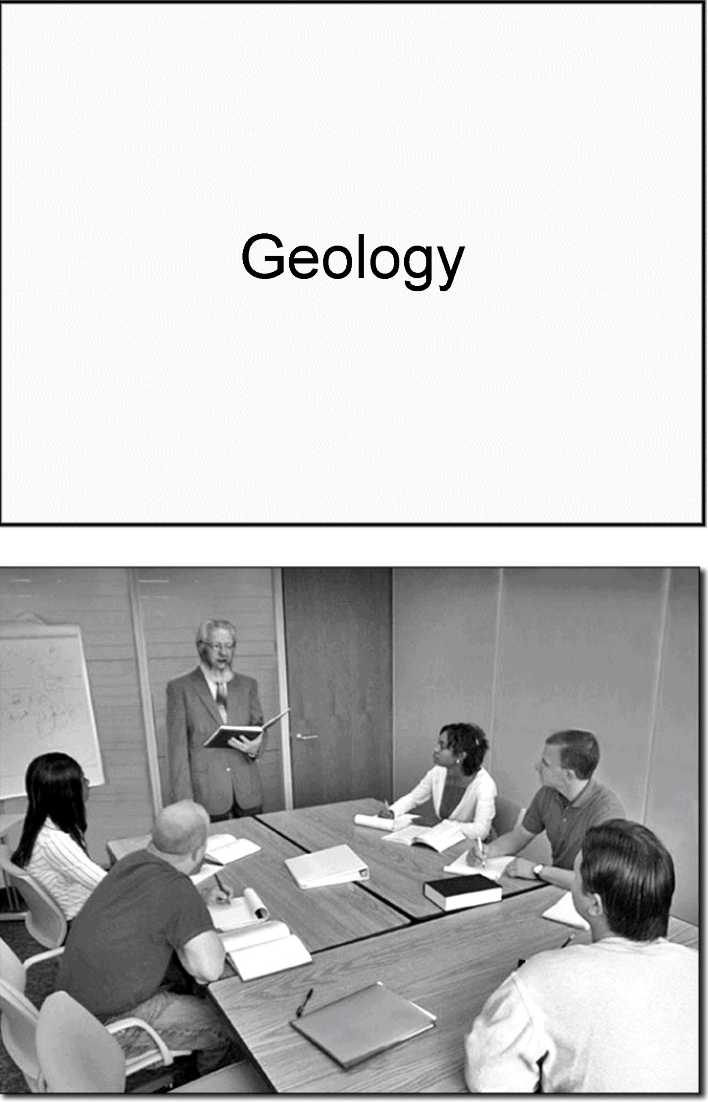
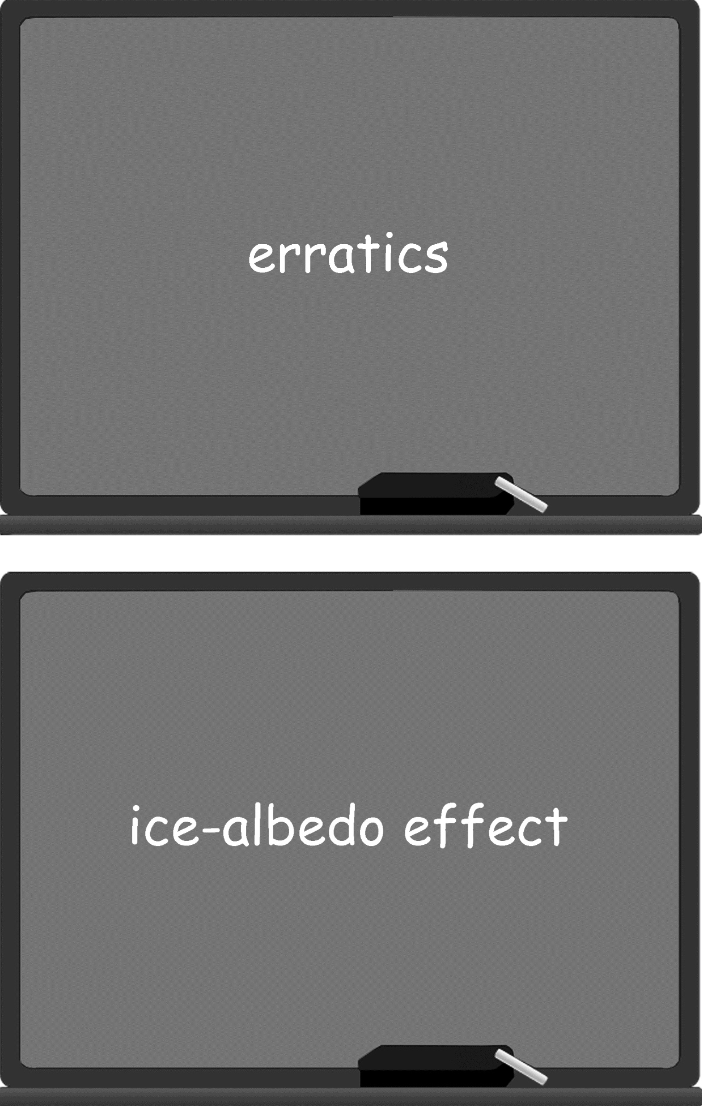

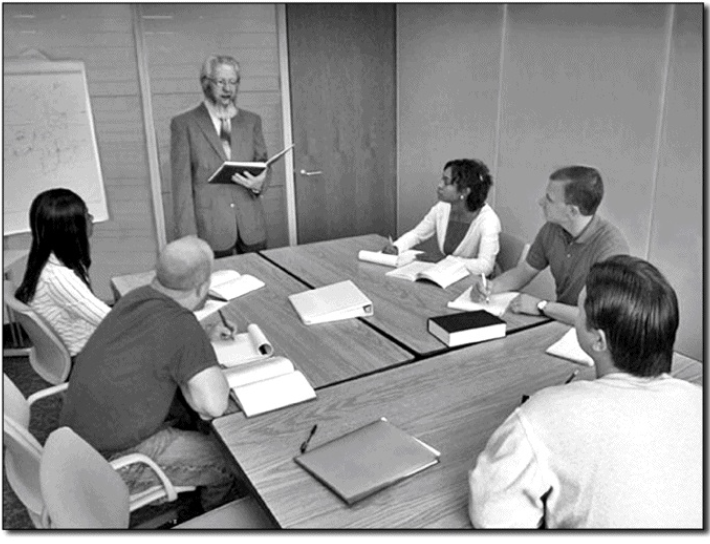
Directions: Now answer the questions.
23. What aspect of the Earth 750 million years ago is the lecture mainly about?
A. The changes in locations of the continents
B. The effect of greenhouse gases on the atmosphere
C. Factors that influenced the ocean currents
D. Factors that contributed to a global freeze
24. According to the professor, how do geologists interpret the presence of erratics in the tropics?
A. It indicates that carbon-dioxide levels were once higher there.
B. It is evidence of global glaciation.
C. It indicates that the Earth may cool off at some point in the future.
D. It is evidence that some glaciers originated there.
25. What is the ice-albedo effect?
A. Global warming is balanced by carbon dioxide in the oceans.
B. Solar radiation retained in the atmosphere melts ice.
C. Large amounts of carbon dioxide are removed from the atmosphere.
D. Reflection of heat by glaciers contributes to their growth.
26. What is the relationship between carbon dioxide and silicate rocks?
A. Silicate rocks are largely composed of carbon dioxide.
B. Silicate rocks contribute to the creation of carbon dioxide.
C. The erosion of silicate rocks reduces carbon-dioxide levels in the atmosphere.
D. The formation of silicate rocks removes carbon dioxide from the oceans.
27. What was one feature of the Earth that contributed to the runaway freeze 750 million years ago?
A. Carbon-dioxide levels in the oceans were low.
B. The continents were located close to the equator.
C. The movement of glaciers carried away large quantities of rock.
D. The level of greenhouse gases in the atmosphere was high.
28. Listen to Track 61.
A. To compare an unfamiliar object to a familiar one
B. To reveal evidence that contradicts his point
C. To indicate uncertainty as to what deposits from glaciers look like
D. To encourage students to examine rocks in streams
SPEAKING
This section measures your ability to speak in English about a variety of topics.
There are four questions in this section. For each question, you will be given a short time to prepare your response. When the preparation time is up, answer the question as completely as possible in the time indicated for that question. You should record your responses so that you can review them later and compare them with the notes in the Answers section and scoring rubrics.
1. You will now be asked to give your opinion about a familiar topic. Give yourself 15 seconds to prepare your response. Then record yourself speaking for 45 seconds.
Listen to Track 62.
2. You will now read a short passage and listen to a conversation on the same topic. You will then be asked a question about them. After you hear the question, give yourself 30 seconds to prepare your response. Then record yourself speaking for 60 seconds.
Listen to Track 63.
Listen to Track 64.
.png)
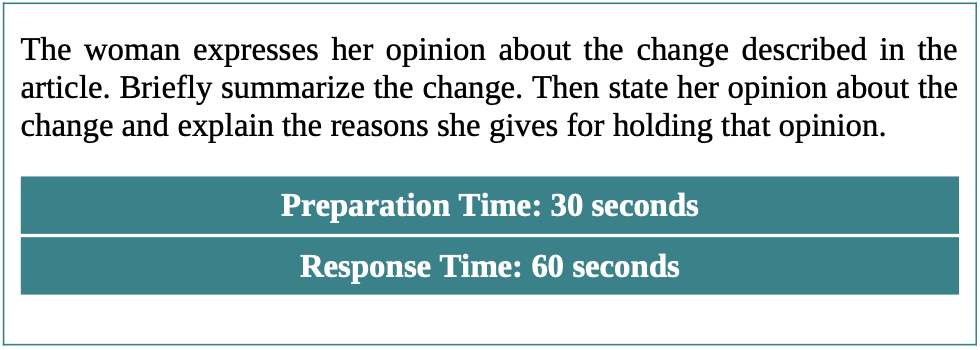
3. You will now read a short passage and listen to a lecture on the same topic. You will then be asked a question about them. After you hear the question, give yourself 30 seconds to prepare your response. Then record yourself speaking for 60 seconds.
Listen to Track 65.
Listen to Track 66.
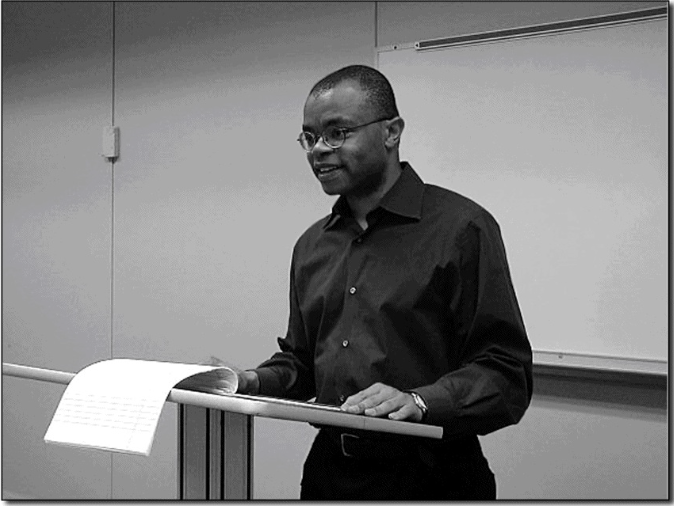
4. You will now listen to part of a lecture. You will then be asked a question about it. After you hear the question, give yourself 20 seconds to prepare your response. Then record yourself speaking for 60 seconds.
Listen to Track 67.
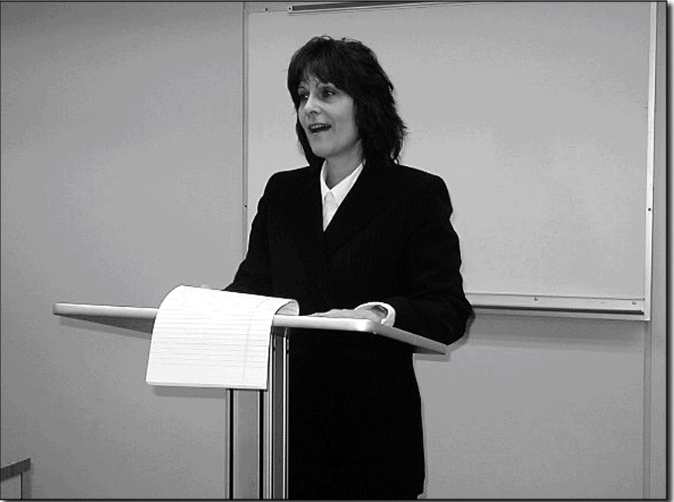

WRITING
This section measures your ability to write in English to communicate in an academic environment.
There are two writing questions in this section.
For question 1, you will read a passage and listen to a lecture about the same topic. You may take notes while you read and listen. Then you will write a response to a question based on what you have read and heard. You may look back at the passage when answering the question. You may use your notes to help you answer the question. You have 20 minutes to plan and write your response.
For question 2, you will write an essay based on your own knowledge and experience. You have 30 minutes to plan and complete your essay.
1. Directions: Give yourself 3 minutes to read the passage.

Listen to Track 68.
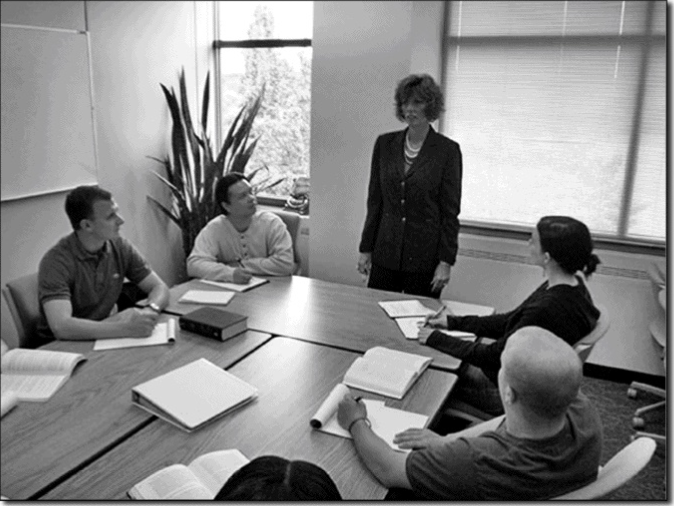
Directions: You have 20 minutes to plan and write your response. Your response will be judged on the basis of the quality of your writing and on how well your response presents the points in the lecture and their relationship to the reading passage. Typically, an effective response will be 150 to 225 words.
Listen to Track 69.
Summarize the points made in the lecture, being sure to explain how they challenge specific points made in the reading passage.
2. Directions: Read the question below. You have 30 minutes to plan, write, and revise your essay. Typically, an effective response will contain a minimum of 300 words.
Do you agree or disagree with the following statement?
People learn things better from those at their own level—such as fellow students or co-workers—than from those at a higher level, such as teachers or supervisors.
Use specific reasons and examples to support your answer. Be sure to use your own words. Do not use memorized examples.


-340x215.png)
-340x215.png)
-340x215.png)
